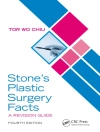Laparoscopic surgery, both free-hand and robotic-assisted, has proved to be a transformational technology with a major impact on urologic oncology. While academic urologists today vigorously debate whether a procedure done laparoscopically yields better outcomes than the comparable open procedure, urologic surgeons are voting with their feet: they are performing more and more laparoscopic surgeries every year. The overwhelming interest in lapa- scopic surgery is apparent at every urological meeting, but it is perhaps most evident in urologic training programs. Young urologists clearly understand that they must learn minimally invasive techniques if they are to be compe- tive in practice, particularly in the field of oncology. Regardless of the outcome of this debate, the development of laparoscopic surgery has wrought a major resurgence of interest in the importance of sur- cal technique. A decade ago, surgeons themselves seemed bored by presen- tions or publications that described a surgical technique. There was a general sense that it had all been worked out long ago. That attitude seems oddly out of place today, when our literature and our meetings are filled with intense debates about the differences between surgical approaches and the importance of technique. We now know, for example, that with regard to all important outcomes of major cancer, the skill and experience of the surgeon have a p- found impact on the results of surgery. We know that there is a learning curve, sometimes remarkably prolonged, for crucial outcomes such as cancer control after prostatectomy.
Tabella dei contenuti
Laparoscopic Anatomy of the Upper Urinary Tract: Intra-Abdominal and Retroperitoneal Approaches.- Laparoscopic Anatomy of the Pelvis.- Adrenalectomy.- Radical Nephrectomy.- Partial Nephrectomy.- Nephroureterectomy.- Retroperitoneal Lymph Node Dissection.- Pelvic Lymph Node Dissection.- Radical Prostatectomy.- Radical Cystectomy and Urinary Diversion.












